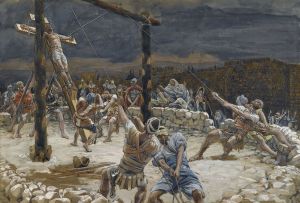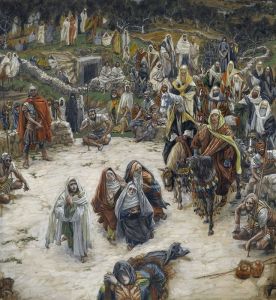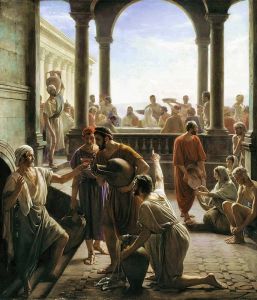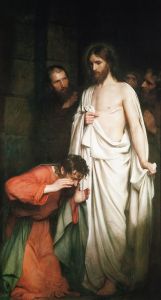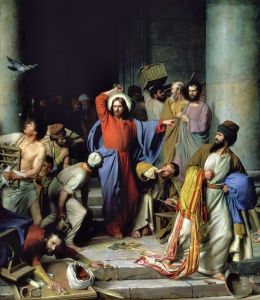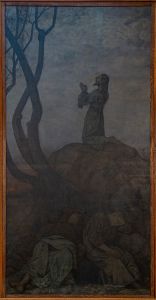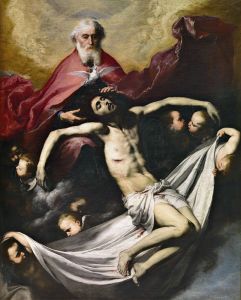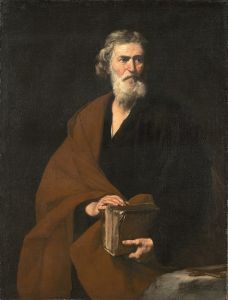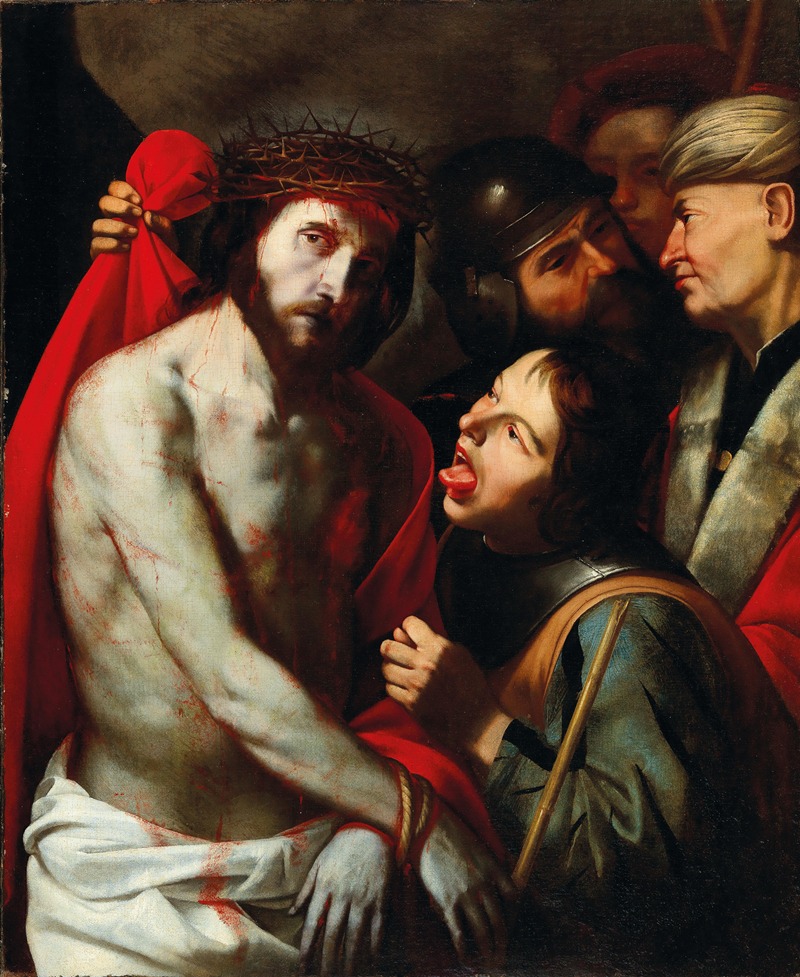
The Mocking of Christ
A hand-painted replica of Jusepe de Ribera’s masterpiece The Mocking of Christ, meticulously crafted by professional artists to capture the true essence of the original. Each piece is created with museum-quality canvas and rare mineral pigments, carefully painted by experienced artists with delicate brushstrokes and rich, layered colors to perfectly recreate the texture of the original artwork. Unlike machine-printed reproductions, this hand-painted version brings the painting to life, infused with the artist’s emotions and skill in every stroke. Whether for personal collection or home decoration, it instantly elevates the artistic atmosphere of any space.
"The Mocking of Christ" is a painting by the Spanish Baroque artist Jusepe de Ribera, created in 1615. Ribera, also known as José de Ribera, was a prominent painter and printmaker of the 17th century, recognized for his dramatic realism and intense use of chiaroscuro, a technique that emphasizes the contrast between light and dark. He spent most of his career in Italy, particularly in Naples, which was then under Spanish rule.
This painting is a significant example of Ribera's work, showcasing his ability to convey emotion and narrative through vivid imagery and meticulous detail. "The Mocking of Christ" depicts a scene from the Passion of Jesus, a subject frequently explored in Christian art. The painting illustrates the moment when Christ is mocked by Roman soldiers before his crucifixion, a theme that has been a poignant subject for many artists throughout history.
In Ribera's depiction, Christ is shown seated, wearing a crown of thorns, with his hands bound. The soldiers surrounding him are portrayed with exaggerated expressions, emphasizing their cruelty and mockery. Ribera's use of chiaroscuro is evident in the way light falls dramatically on Christ's figure, highlighting his serene and resigned expression amidst the chaos and brutality of the scene. This contrast between light and dark not only enhances the emotional impact of the painting but also serves to focus the viewer's attention on the central figure of Christ.
Ribera's style is characterized by a strong naturalism, influenced by the Caravaggisti, followers of the Italian painter Caravaggio. This influence is apparent in the realistic depiction of the figures and the intense emotional atmosphere of the painting. Ribera's attention to detail is evident in the textures of the clothing and the expressions of the figures, which contribute to the overall impact of the work.
"The Mocking of Christ" reflects Ribera's interest in human suffering and the darker aspects of human nature, themes that recur throughout his oeuvre. His works often explore the tension between physical torment and spiritual transcendence, a duality that is powerfully captured in this painting.
The painting is housed in the Museo di Capodimonte in Naples, Italy, where it remains an important part of the museum's collection. It is considered one of Ribera's masterpieces and continues to be studied for its artistic and historical significance. The work exemplifies Ribera's contribution to the Baroque movement and his ability to convey complex narratives through his art.
Ribera's influence extended beyond his lifetime, impacting both Spanish and Italian art. His works are noted for their emotional depth and technical skill, qualities that have earned him a lasting place in the history of art. "The Mocking of Christ" stands as a testament to Ribera's mastery of his craft and his ability to engage viewers with powerful and thought-provoking imagery.






